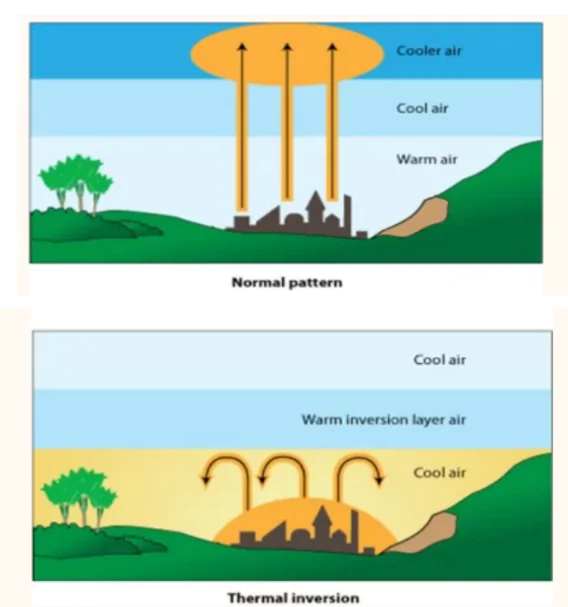![]() April 29, 2024
April 29, 2024
![]() 5555
5555
![]() 0
0
Temperature inversion is a curious atmospheric occurrence that flips our usual understanding of temperature changes with altitude. Normally, as we go higher, it gets cooler, but in certain conditions, like on a still, clear winter night, this trend reverses. During such nights, the Earth loses heat absorbed during the day, causing the ground to become cooler than the air above it by dawn. In polar regions, temperature inversion happens regularly throughout the year.
 Dry air near the ground surface
Dry air near the ground surface
| Must Read | |
| Current Affairs | Editorial Analysis |
| Upsc Notes | Upsc Blogs |
| NCERT Notes | Free Main Answer Writing |
Temperature inversions can lead to stable atmospheric conditions, the trapping of airborne particles, fog formation, and protective effects like frost protection in specific terrains. The dispersal of the inversion typically occurs as the sun rises and warms the Earth’s surface, promoting air mixing.
<div class="new-fform">
</div>
Latest Comments